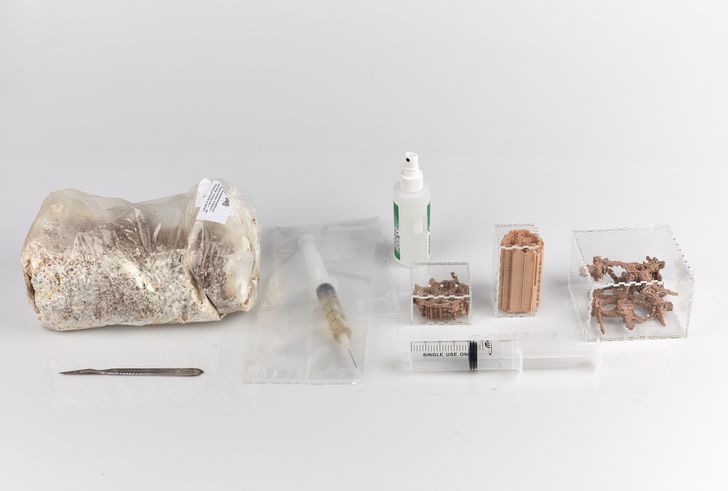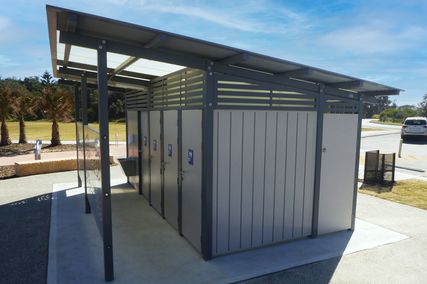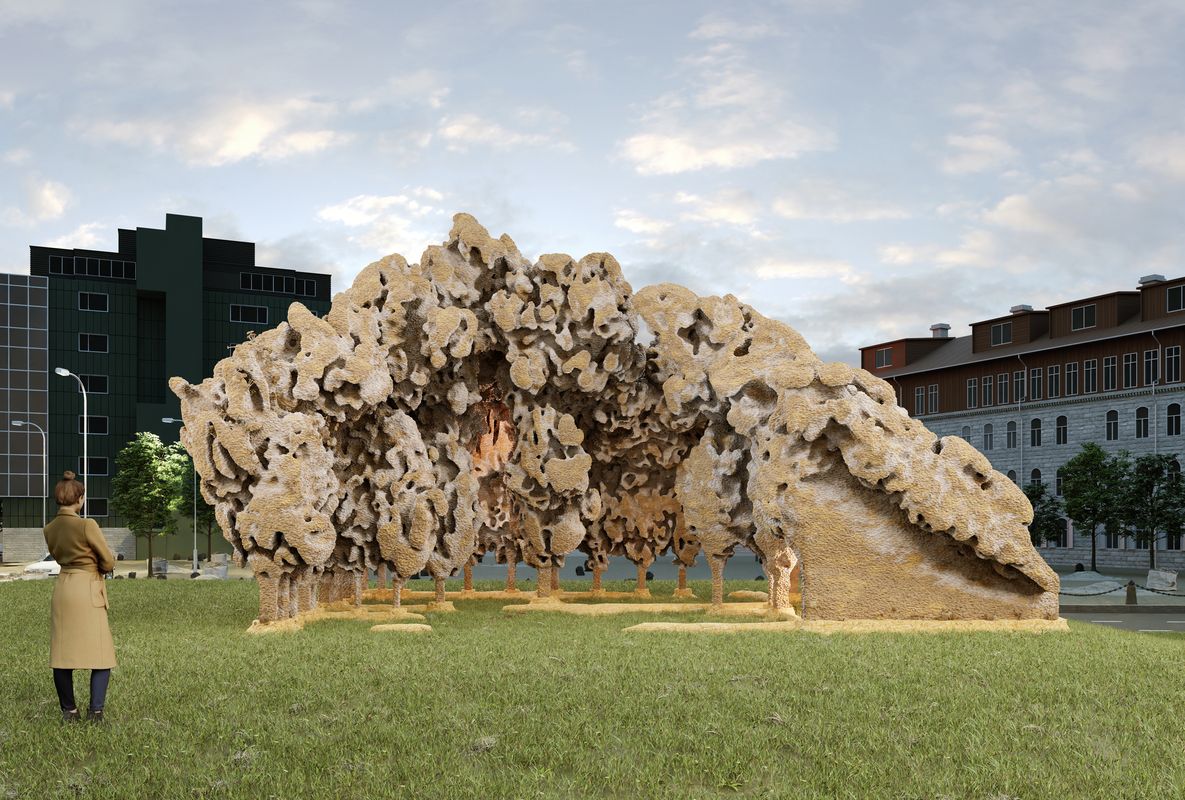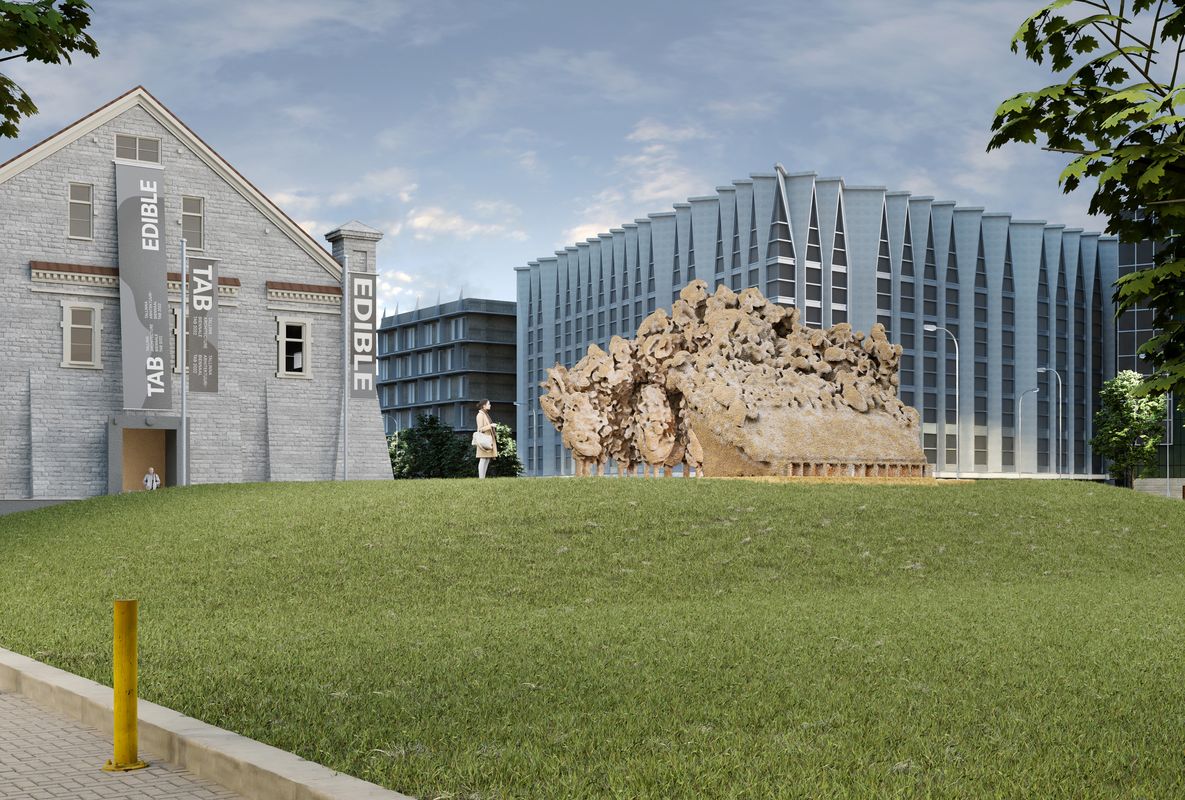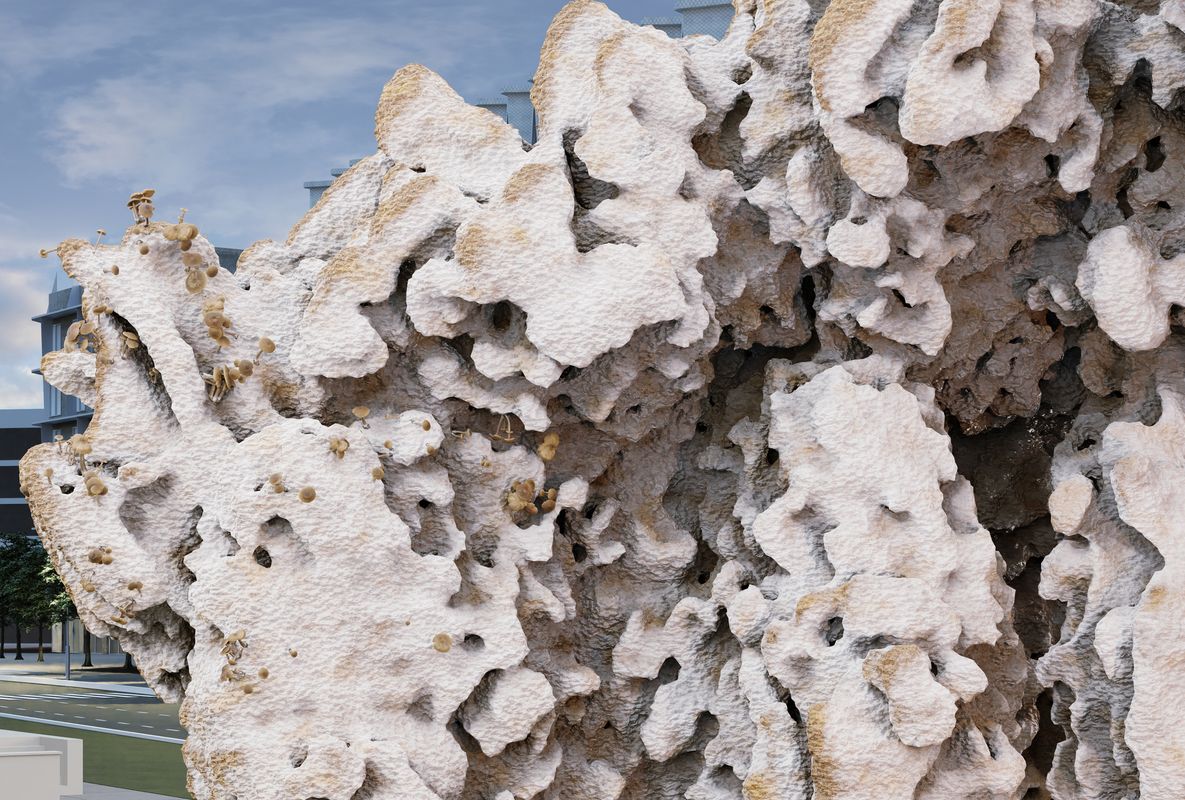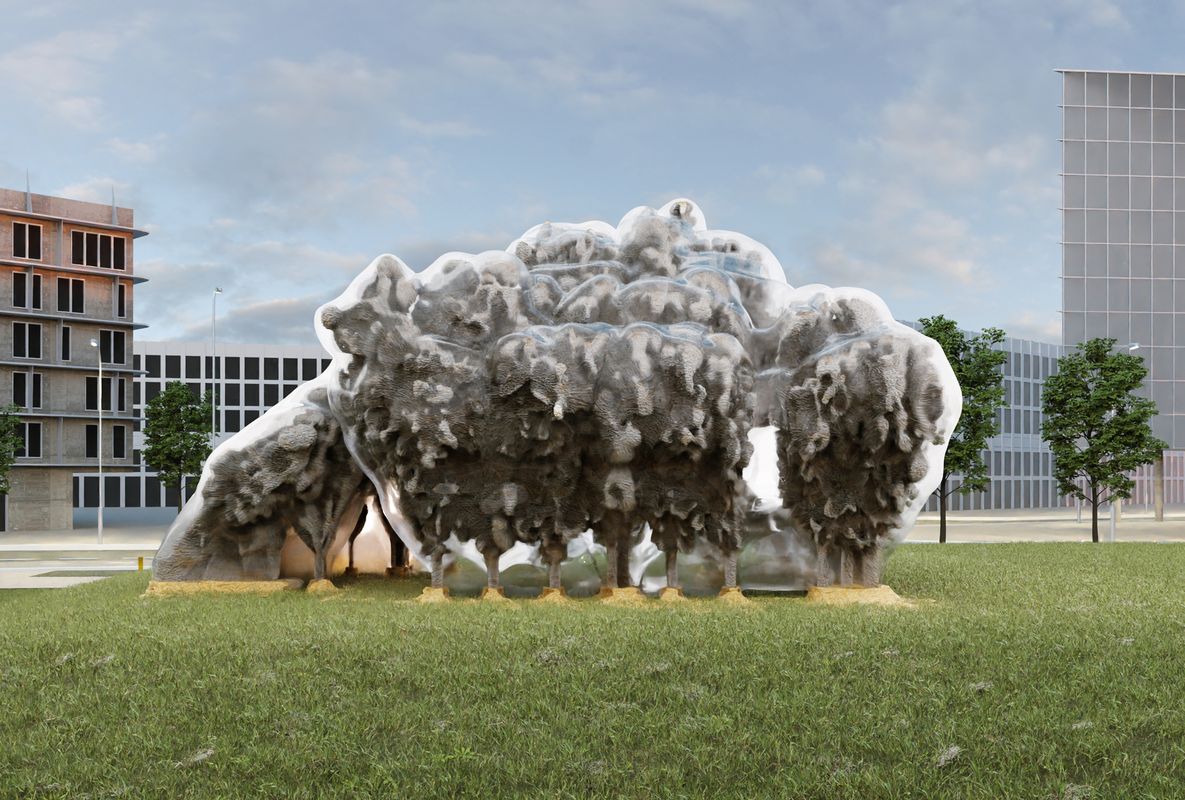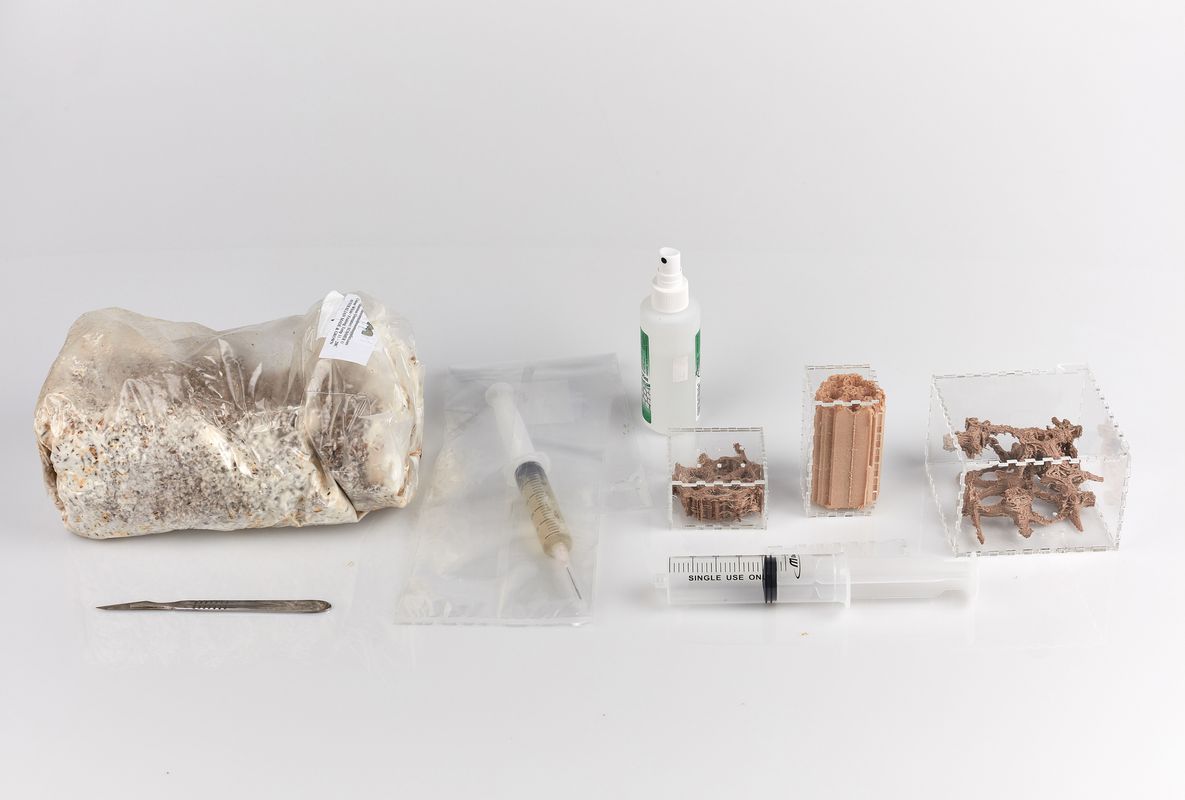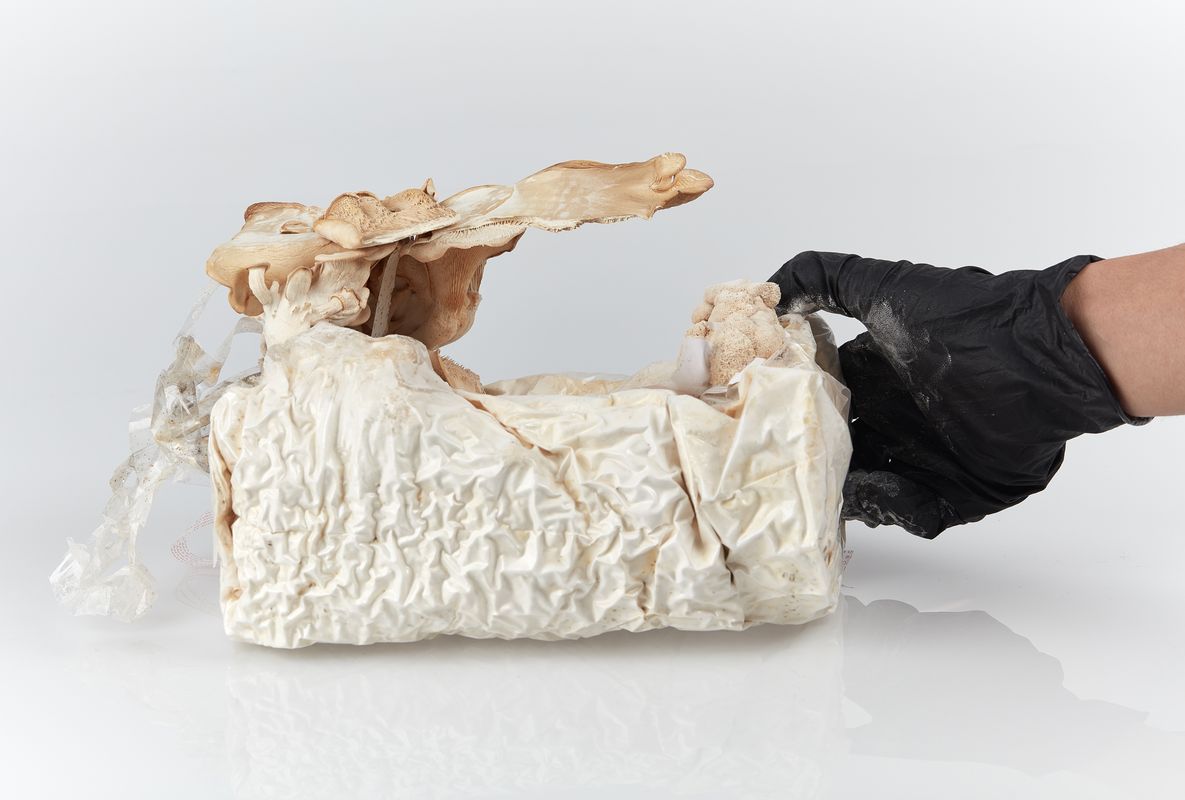An Australian team has won the installation competition for the 2022 Tallinn Architecture Biennale in Estonia with a proposal that will be made of mushrooms.
Burlasite by Simulaa with Natalie Alima will use 3D printing technology to create a base frame that will over time be taken over by mycelia – the rooting system of the fungus.
With the biennale theme of “Edible; Or, The Architecture of Metabolism” the curators of the 2022 installation competition looked to the slow food movement and challenged competitors to explore how the emerging technologies of fast construction can be slowed to “nourish local craftsmanship, better utilize available materials, respond to environments over long time scales and enhance bespoke design expression.”
Burlasite by Simulaa with Natalie Alima
The competition sought “proposals that take a long, romantic and human centric view towards construction technology, demonstrating designs and processes that extend and expand learning and mastery, traditional craftsmanship and analogue fabrication, repurposing and reuse of local materials, human invention and improvisation, environmental adaptation and responsiveness, wonderment, and delight.”
The team at Simulaa and Natalie Alima responded with a design based on the archetypal hut. “This project takes the base structure of Martin Heidegger’s abandoned hut as the host form, stripped of its original cladding, leaving only its timber frame, as the armature for both a growth algorithm and a biological system to reconfigure and grow upon,” the designers said.
Burlasite by Simulaa with Natalie Alima
The installation will be made from waste material of the local timber industry. Timber off cuts and saw dust will be combined with a biodegradable polymer which will be 3D printed to form the base frame. The structure will be “inoculated” with mushroom fibres, which will eventually consume the frame and harden into its own mycelial structure.
The process is similar to how bio-scaffolds are made in medicine to encourage growth of human tissue over an artificial frame.
“This project curates an uneasy alliance between biological transformations and the performance of a generative algorithm,” the designers said. “Through this measured process, the project seeks to heighten this state of flux, expressed in the object’s material decay that is in tension between emerging and eroding form.”
The 2022 installation competition for Tallin Architecture Biennale is curated by Gwyllim Jahn, Cameron Newnham, Soomeen Hahm Design and Igor Pantic – the winners of the 2019 competition.
The three-member jury included Australian architect Roland Snooks, founder of Kokkugia and associate professor at RMIT University.
Tallin Architecture Biennale opens on 7 September 2022 and the installation will be on display at the front of the Museum of Estonian Architecture until 2024.



